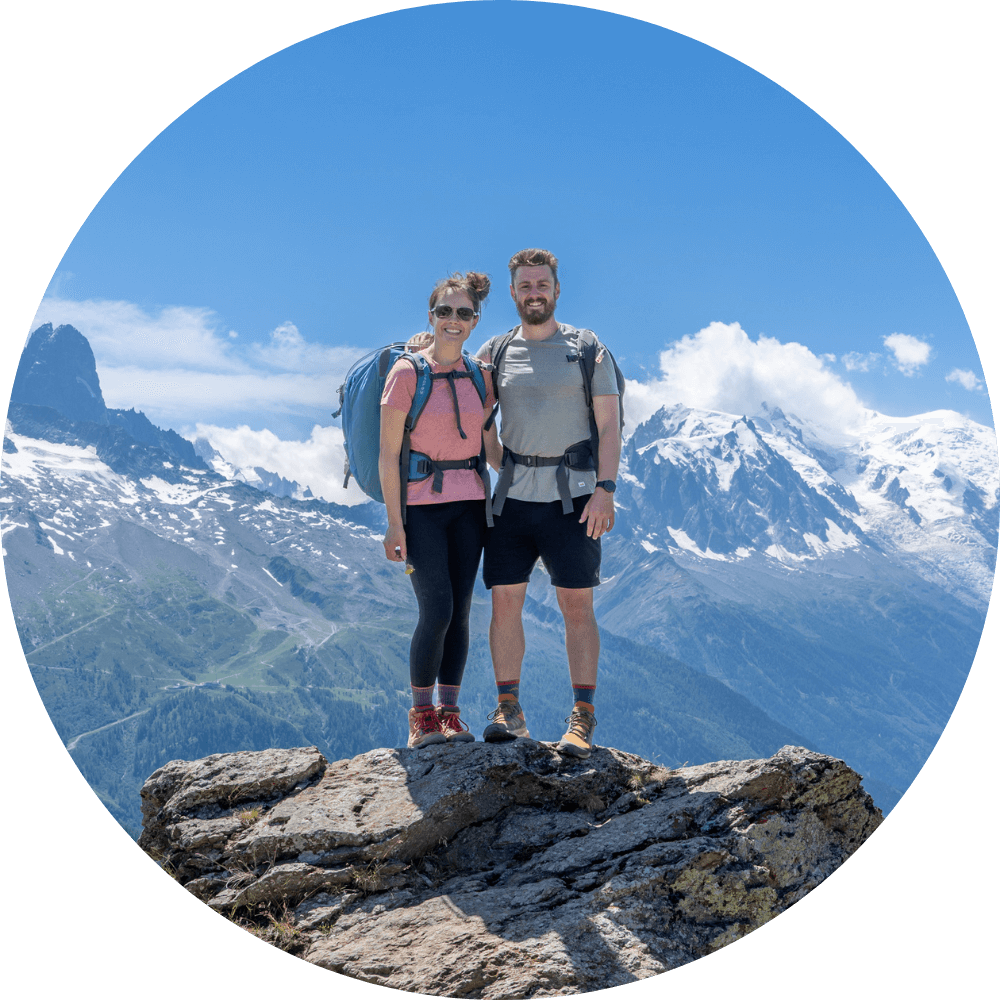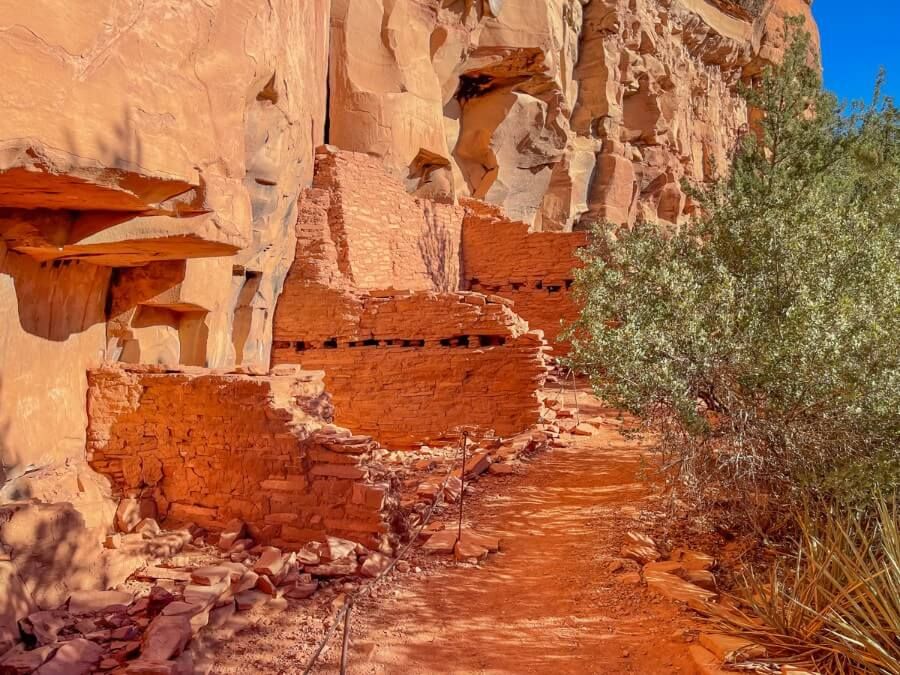Sedona’s surrounding landscapes are home to various ruins showcasing ancient cliff dwellings and rock art. Many of these ruins are found in remote locations deep inside red sandstone canyons, and you can either visit on your own or as part of a tour. After visiting the ruins ourselves, we think they’re definitely worth adding to your Sedona vacation.
In this guide we show you where to find the ruins near Sedona and what to expect when you visit, based on our own experiences. Read more about us.
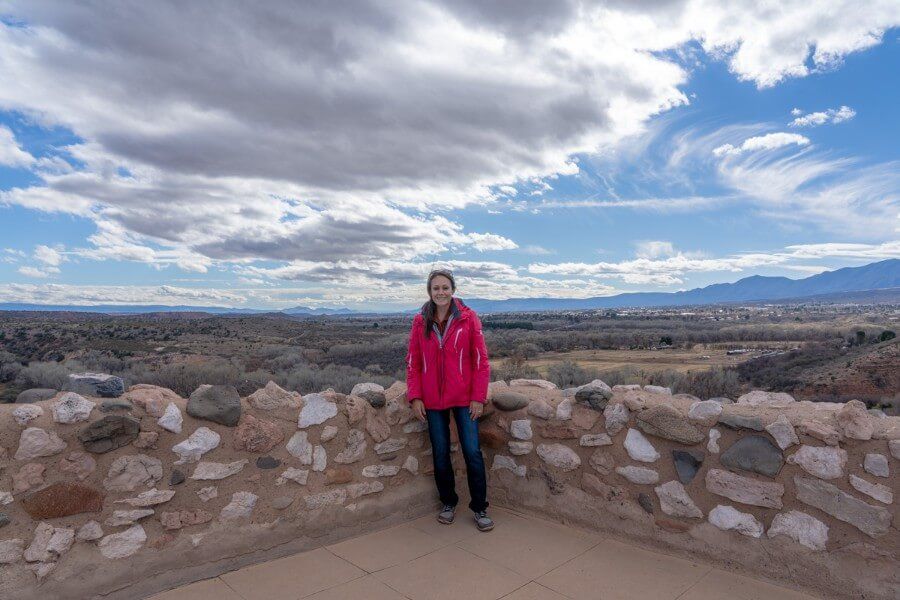
We discovered that one of the ruins, the Honanki Heritage Site, could only be reached with a high clearance vehicle, but luckily we had already rented a Jeep so we could drive Sedona’s Jeep trails.
To reach Honanki you’ll either need to rent a 4WD vehicle or take a tour. Honestly, it’s not the end of the world if you skip this one and you can reach the other 4 in your car. Okay, let’s begin!
Note: Our content is reader supported and contains affiliate links. If you make a purchase through one of these links, we may earn a small commission at no extra cost to you and it helps us keep this site running.
SEDONA Planning
📖 Ultimate Sedona Guidebook: Get our complete 50+ page offline PDF with everything you need for Sedona.
📞 Personalized Sedona Planning Call: Book a 60 minute call with Mark to have your questions answered, optimize your itinerary, avoid tourist traps and get our best insider tips.
💡 Still Planning? Read our essential first-timer’s guide to visiting Sedona.
1. Montezuma Castle National Monument
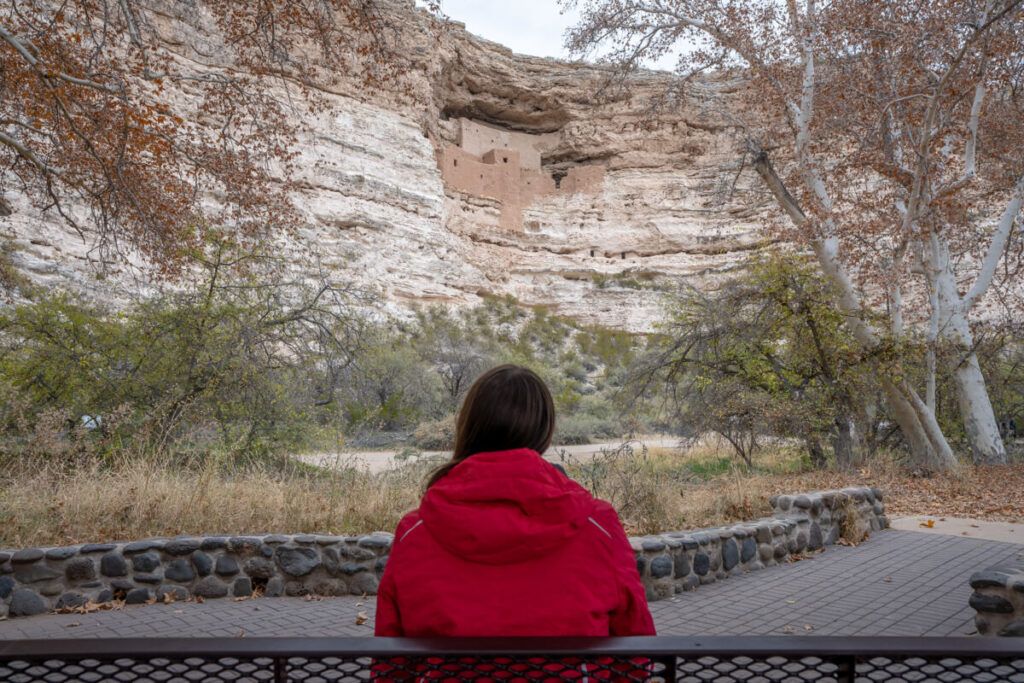
The most popular indigenous ruin near Sedona is Montezuma Castle National Monument. In 1906, President Theodore Roosevelt created this national monument to help preserve indigenous history and culture.
Montezuma Castle is one of the most well-preserved cliff dwellings ever found in Arizona. The entire complex of homes was built into a naturally occurring limestone cliff. Because of the location inside the cliff, the impressive structure has been able to withstand the test of time. It has given archeologists precious and invaluable information about previous ancient civilizations.
The ruin is comprised of two individual locations, Montezuma Castle and Montezuma Well. These two sites are located only 11 miles apart and can be easily visited in one day.
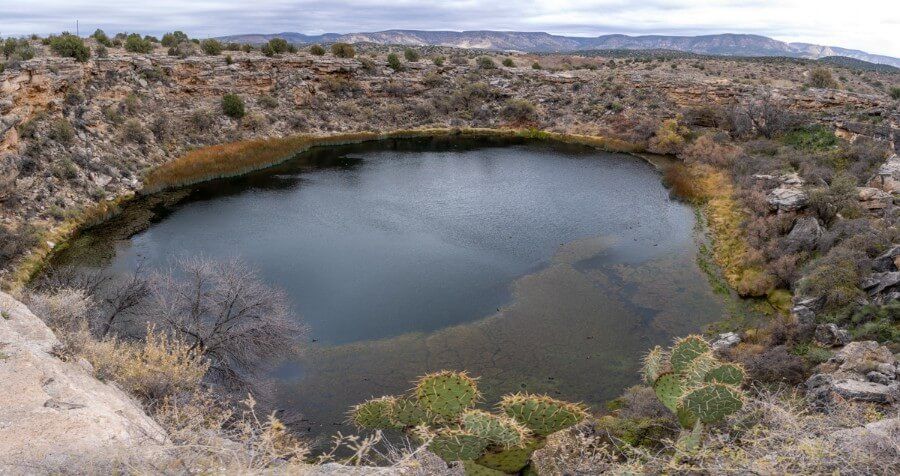
Montezuma Well is the other subunit of Montezuma Castle National Monument. The well is a natural limestone sinkhole containing over 15 million gallons of water. This area was a mystery for years because it was a reliable water source in the middle of the desert and no one knew where the water was originating.
You can also visit an ancient pit house located very close to Montezuma Well. The circular structure was historically built into the ground for shelter.
2. Tuzigoot National Monument
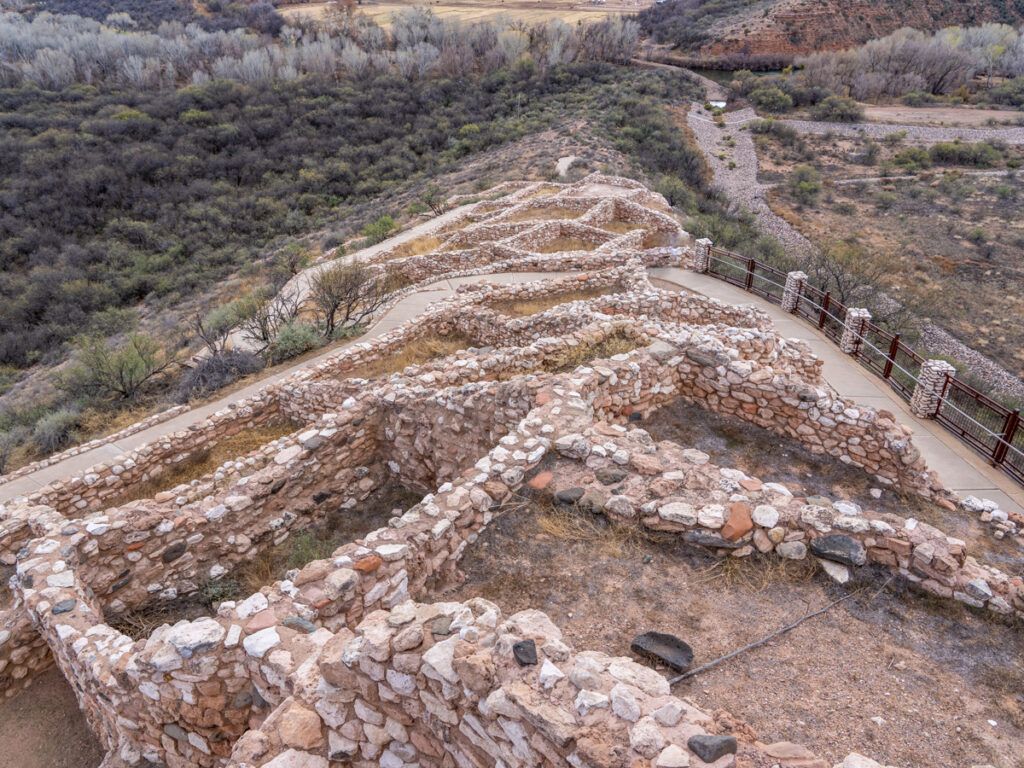
The most exposed ancient ruin near Sedona is Tuzigoot National Monument. Built by the Sinagua people, Tuzigoot is an extremely large pueblo ruin. Its location high above Arizona’s Verde River was essential for the people who once lived here. The entire complex consists of at least 97 ground level rooms. But there is also a smaller second story which you can explore on your own.
We walked the entire perimeter of the pueblo and explored a few of the small hiking trails nearby. One major highlight for us was the beautiful view from the top of the pueblo overlooking the Verde Valley. If you’re looking for tour option to Tuzigoot, check out this tour.
Need help planning your trip to Sedona?
Our Sedona travel guidebook gives you hidden gem hiking trails, secret caves, vortex sites, ancient ruins, wineries, jeep trails, photo spots, where to eat and stay, 1-5 day itinerary ideas and much more. Plus, you’ll get an exclusive map to use in Sedona!
View Guidebook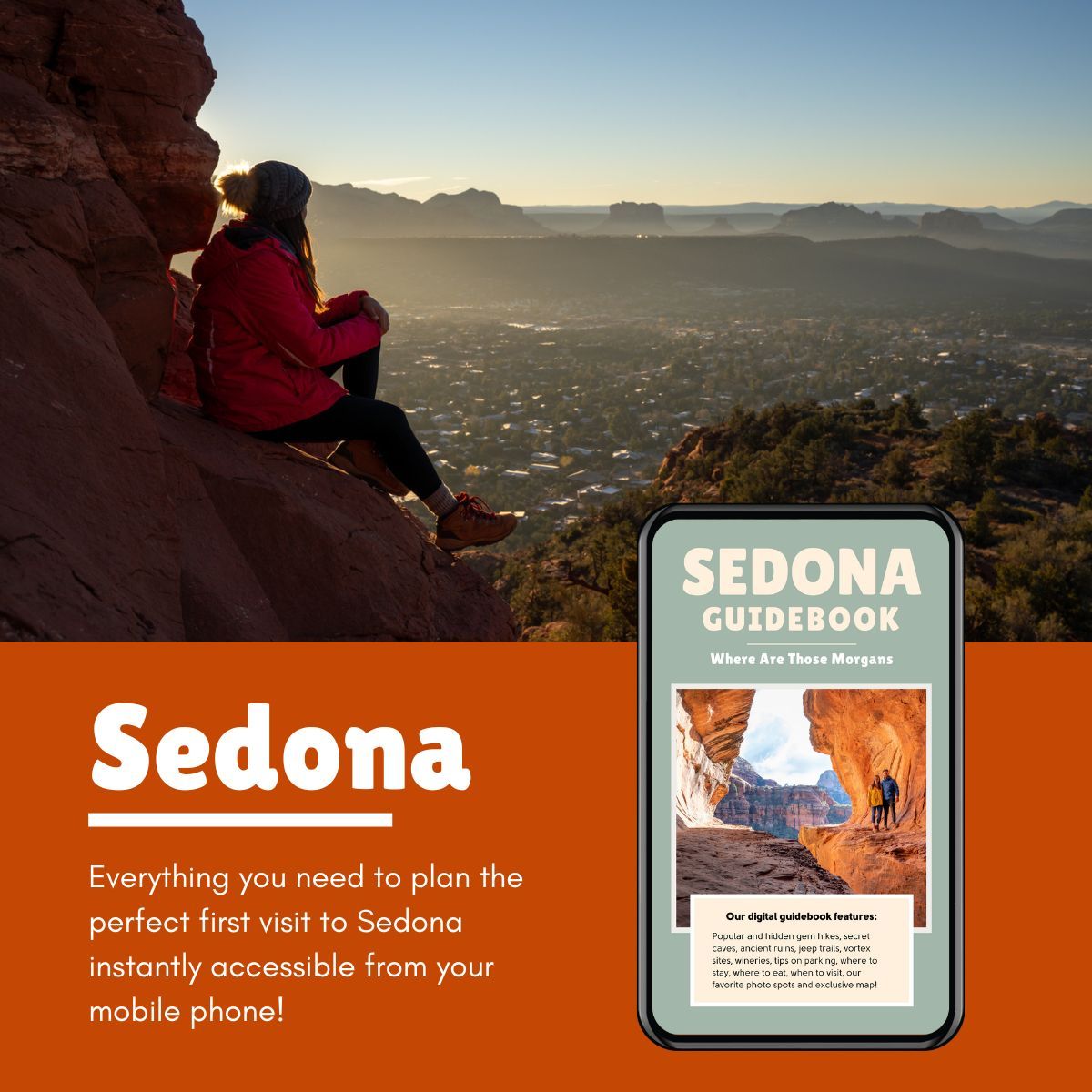
3. Palatki Heritage Site
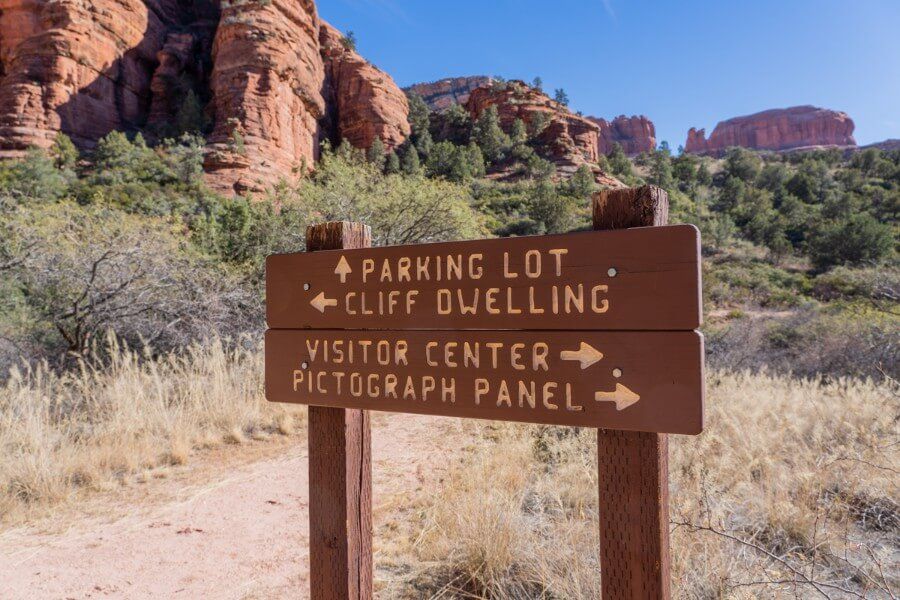
One of the most educational Sedona ruins is the Palatki Heritage Site. This site features a large collection of cliff dwellings and pictographs. Archeologists believe it was one of the Sinagua’s largest and most important communities.
There are two short hiking trails featuring a sacred grotto area and several cliff dwellings. However, a tour reservation is required when visiting Palatki. Reservations can be made on Recreation.gov and cost $1.00 each. Space is extremely limited so we highly recommend you book a tour as soon as you know the date you plan to visit.
4. Honanki Heritage Site
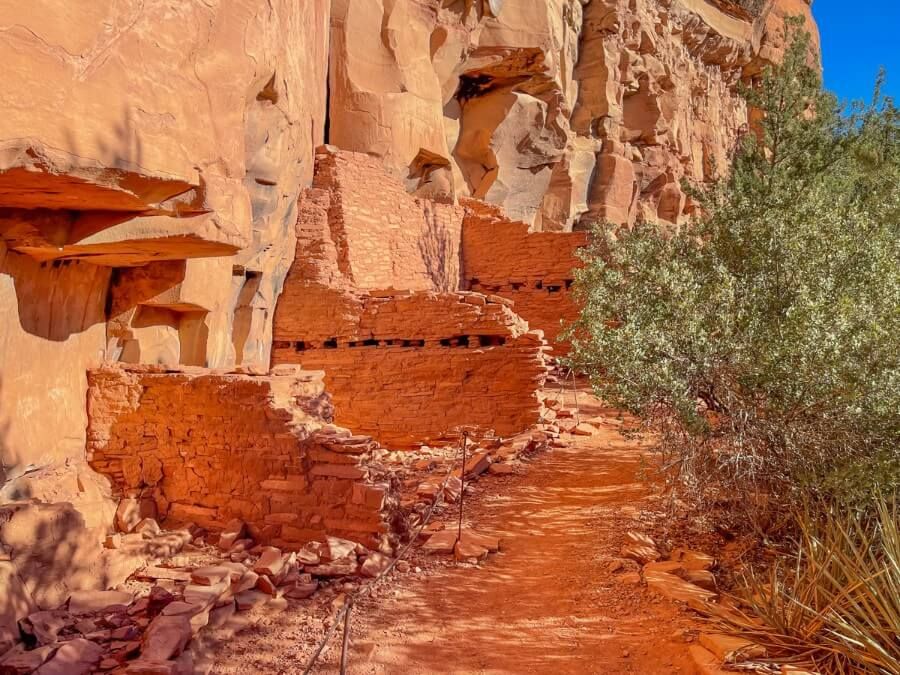
The most isolated Sedona Indian ruin is the Honanki Heritage Site. However, it requires a high clearance vehicle with 4WD to access. So if you want to visit, but don’t have a 4WD vehicle, we recommend you book this tour.
This site showcases a large collection of well preserved cliff dwellings featuring rock art discovered within a remote canyon northwest of Sedona. It’s extremely similar to its sister site, Palatki mentioned above. But what makes this location unique is how the dwellings were built directly underneath a cliff overhang.
5. Crane Petroglyph Heritage Site
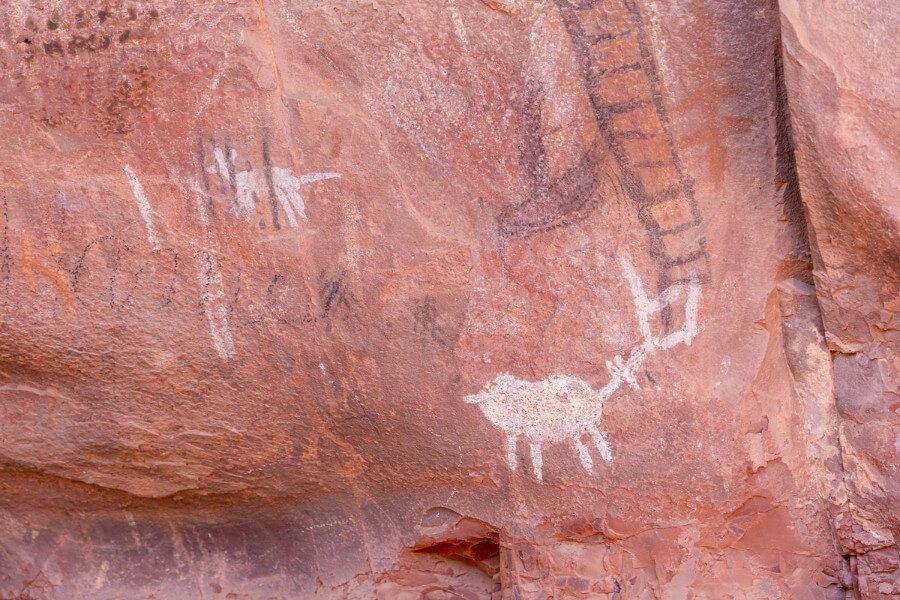
Formerly known as V-Bar-B, the Crane Petroglyph Heritage Site is one of the best places near Sedona to see petroglyphs. It’s the largest known petroglyph site in the Verde Valley and it was acquired by the Coconino National Forest in 1994.
The petroglyphs at this location are known as Beaver Creek Rock Art and you’ll see numerous engravings carved into rocks. This style is indicative of the Sinagua culture who lived here from 1150 to 1400 AD. But these carvings are not to be confused with pictographs which are images painted onto the rocks surface.
The Crane Petroglyph Heritage Site is only open Friday to Monday from 9:30am to 3:00pm. It’s located less than 6.0 miles from Montezuma Well. We visited Montezuma Well on a day when V-Bar-V was closed. In hindsight, we would have arranged our itinerary so we could have visited this amazing site as well.
Sedona Ruins Entry Requirements
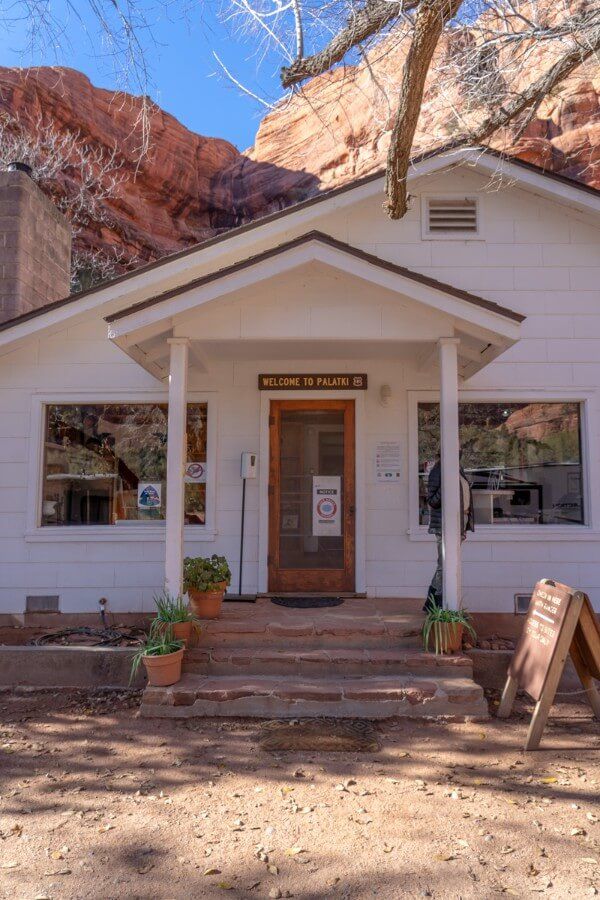
If you have an America the Beautiful Pass, this will give you free entry into all of the ruins near Sedona we discussed in this guide. But you will still have to pay the $1.00 reservation fee for the guided tour at the Palatki Heritage Site.
If you do not have an America the Beautiful Pass, you will need to purchase either a Montezuma Castle/ Tuzigoot Pass or a Red Rock Pass depending on where you plan to visit.
Let’s take a quick look at which pass you need at each Sedona ruin:
- Montezuma Castle National Monument – Montezuma Castle/Tuzigoot pass or America The Beautiful
- Tuzigoot National Monument – Montezuma Castle/Tuzigoot pass or America The Beautiful
- Palatki Heritage Site – Red Rock Pass or America The Beautiful + a reservation for the guided tour
- Honanki Heritage Site – Red Rock Pass or America The Beautiful
- Crane Petroglyph Heritage Site – Red Rock Pass or America The Beautiful
Travel Tip: If you need to purchase a Red Rock Pass, these can be obtained from a self-serve vending machine found at the Palatki, Honanki and Crane Petroglyph Heritage Site in the parking lot.
How To Get To Sedona’s Ruins
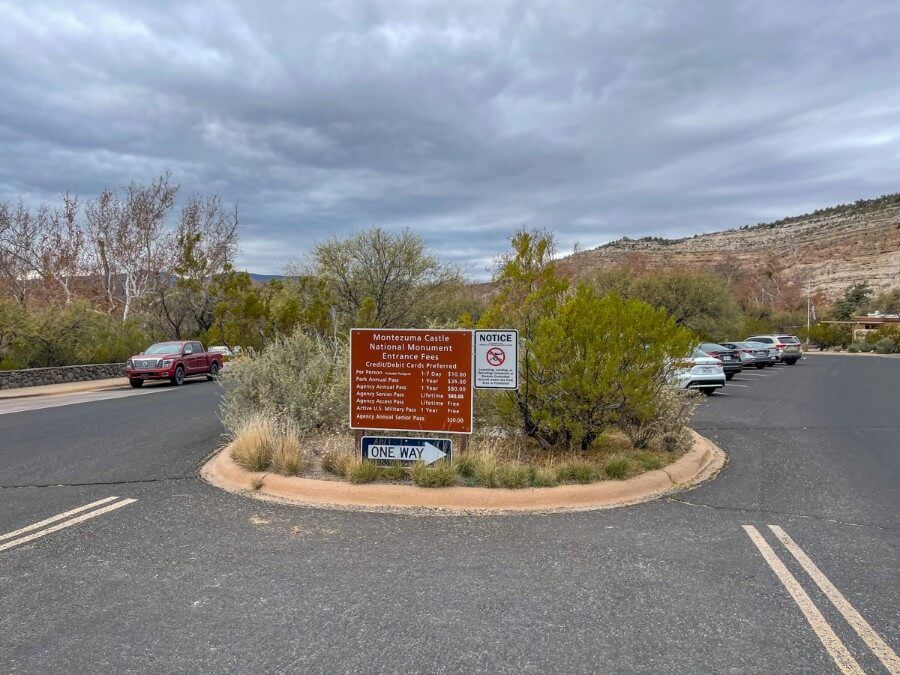
Most of the ruins near Sedona are easily accessible with the exception of the Honanki Heritage Site, but you will need a vehicle or rental car.
Palatki or Honanki are located on Forest Rd 525 which is extremely rough and bumpy. This will make it extremely difficult for most cars to drive and in our 4×4 SUV, we had to drive really slow.
We saw standard vehicles driving to the Palatki Heritage Site, but a 4×4 is required to visit the Honanki Heritage Site due to it’s extremely remote location. We rented a 4×4 Jeep for all of our excursions in Sedona including our visit to Honanki and recommend you book a tour if you do not have access to a 4×4 vehicle.
Here are a few popular tour options:
- Archaeology Hiking Tour – Travel by jeep to discover archaeological remains
- Jerome and Tuzigoot – A popular day trip from Sedona
- Small Group or Private Tour from Phoenix – See ruins and numerous vortex sites
Be sure to read the descriptions before booking a tour to ensure you are visiting the correct sites.
Etiquette Tips
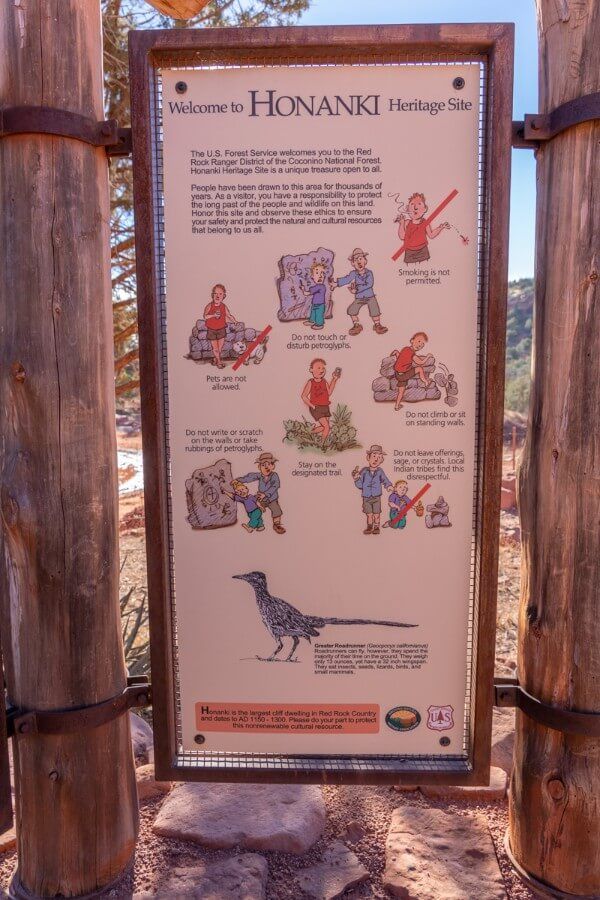
Over the years, we have lost many of these ancient ruins due to human recklessness. It’s important to leave all things as you find them so future generations can also enjoy this beautiful history.
Here are a few etiquette tips to consider for your visit:
- No sitting, climbing or standing on ruins or cliff dwelling walls. Ruins are fragile and any of these actions will compromise the historical site.
- Never touch artifacts. These are important items that should remain exactly where they are located.
- No camping at these historical sites. Fires can destroy prehistoric organic materials and also covers the rock art with soot. Check out the DYRT for nearby camping options.
- Stay on marked trails. It’s important not to venture off trails because our footsteps can destroy fragile ecosystems.
- No graffiti. This destroys rock art and is extremely disrespectful to the cultures who created these wonderful images.
You should plan to arrive early in the day to beat the heat and the crowds. This will make for a much more comfortable visit.
Hiking Tip: When exploring outdoors, be sure to always practice the seven principles of Leave No Trace to preserve natural beauty so others can enjoy the same environments.
Who Created The Ruins Near Sedona?
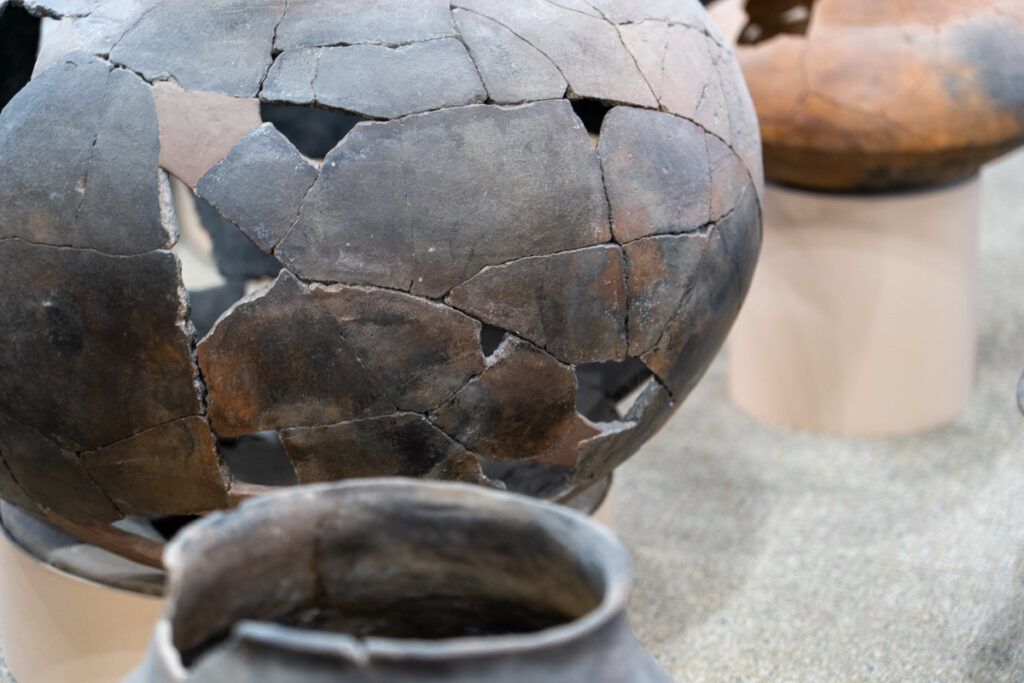
Now that you know where to see the cliff dwellings and rock art in Sedona, it’s important to know about the people who created these ruins.
Many people and cultures have called Sedona home for centuries. But due to a lack of written history, there is little known about the early people who inhabited this region. Most of what we have learned about Sedona’s early culture has been due to archeological discovery.
All of the ruins listed in this guide were once inhabited by the Sinagua people who arrived around 650 AD. They spread throughout the entire Verde Valley during their time.
Originally hunters and gatherers, the Sinagua experimented with agriculture. They used a method of dry farming which led to their name of Sinagua, meaning “without water” in Spanish.
They also expanded on traditional housing method making pit houses with grass thatched roofs for shelter. The Sinagua’s success fueled development for large pueblos and created an influx of people into the Verde Valley area.
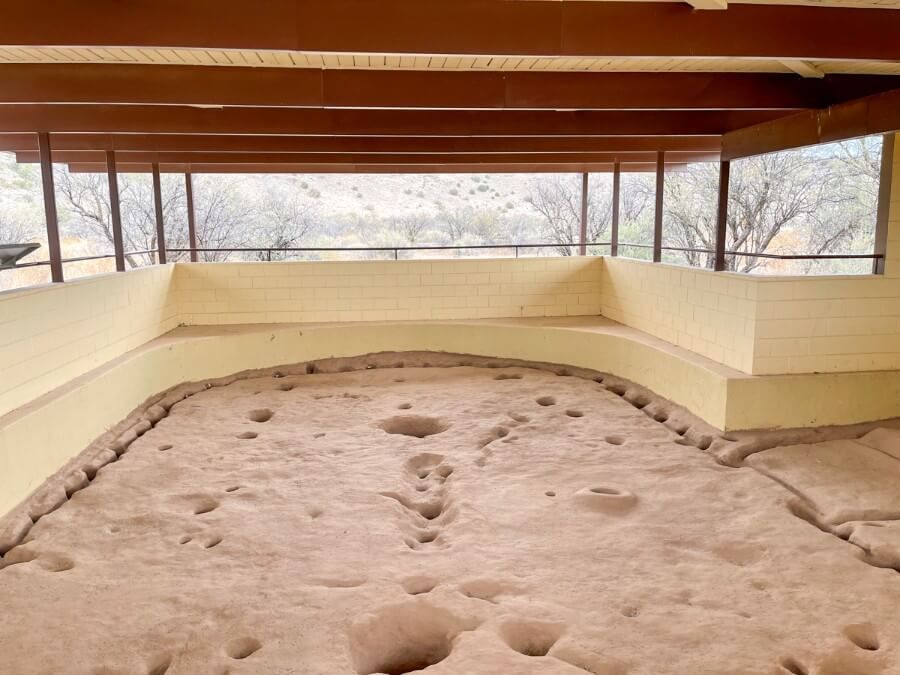
In addition to pit houses, they built large dwellings with several rooms able to house hundreds of people. Archeologists discovered trade artifacts at these ancient ruins near Sedona which showed how extensive the Sinagua’s trade routes were at their peak.
A little more than a century after they first inhabited the area, the Sinagua mysteriously disappeared. This is still one of the biggest mysteries of the Southwest and numerous theories exist as to why the Sinagua left abruptly. Now all we have left are many ancient ruins filled with secrets.
Best Time To Visit
Spring and fall would be the best time to visit the Sedona ruins when temperatures are cool. Arizona summer days are extremely hot ranging anywhere from 95°F to 110°F. Very heavy rains are common late June to early August during the early afternoon. It’s important to drink plenty of water and hydrate properly, especially in the summer months.
The 5 best indigenous ruins near Sedona we mentioned are open year round. We visited Sedona in December and the weather was perfect for hiking at about 60°F. Visiting in the off season also means fewer crowds.
Winter days in Arizona tend to have an average temp of around 60°F with lows commonly in the teens. Snowfall is rare but is possible. If you plan to visit Palatki or Honanki along Forest Rd 525, the road may be impassible in bad weather. Be sure to check the weather forecast when you visit and plan appropriately.
The Morgan Conclusion
We think these ancient ruins are among the top things to do in Sedona because they showcase an incredible amount of indigenous history. And if you have an America the Beautiful pass, you can visit all of these ruins for free which is a great perk.
Are the ruins in Sedona worth it?
Yes, Sedona’s ruins are worth visiting. We learned so much from visiting Montezuma Castle, Tuzigoot, Palatki and Honanki. If you’re short on time, our favorites were Montezuma Castle National Monument and the Palakti Heritage Site.
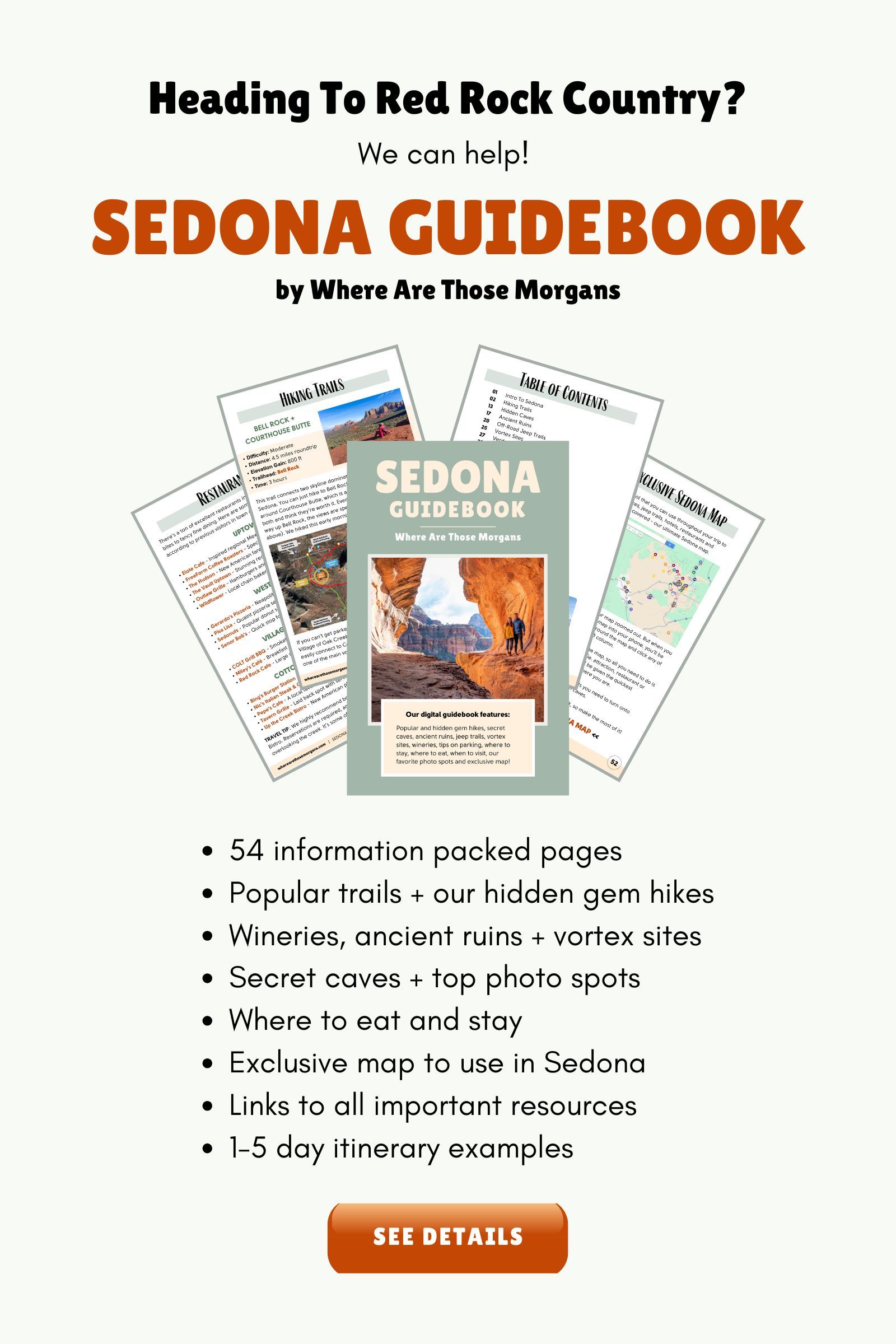
Next Steps
We hope our ruins guide helps with planning your trip to Sedona.
Don’t forget you can book a travel planning video call with us if you’d like our expert help organizing your trip to Sedona. We can answer any questions you have or walk through a personalized itinerary to make the most of your time.
Still researching for your trip?
- What to know about a first visit to Sedona
- Here are the Sedona’s top attractions
- These are the best areas to stay in Sedona
- These are the top hiking trails in Sedona
- Here’s our 1-5 day Sedona itinerary
- This our complete 7-day Sedona itinerary
Finally, if you’ll be visiting more places on the same trip, we recommend reading our Arizona travel guide for more helpful tips and advice.
Happy Travels,
Mark and Kristen
Enjoy this guide? Pin it for your visit!
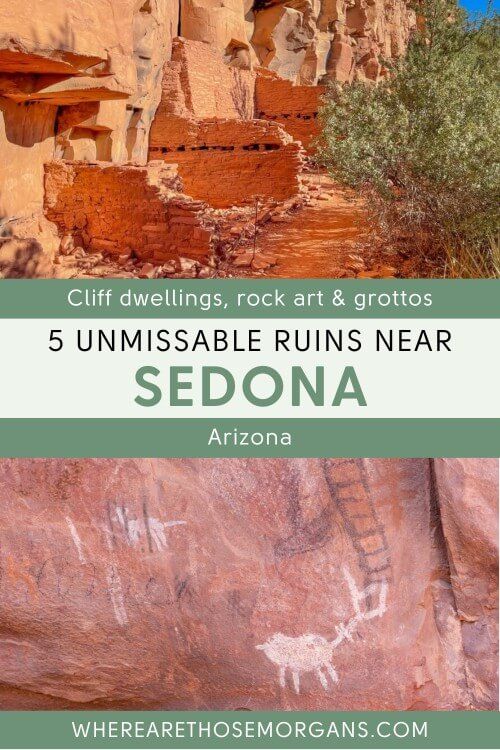
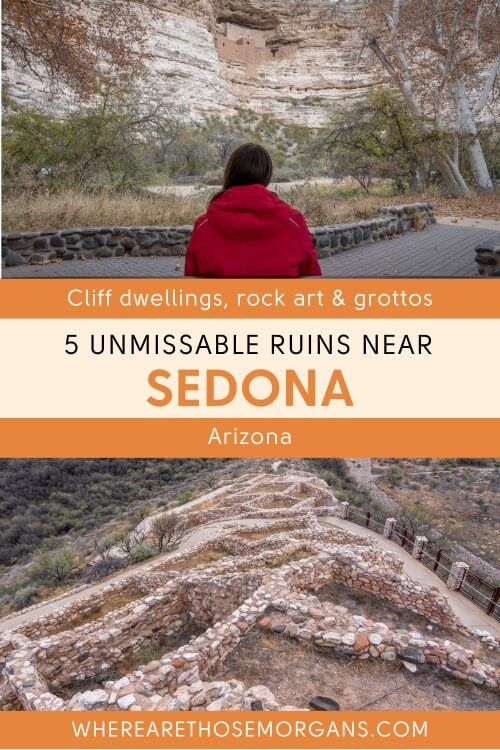
All Rights Reserved © Where Are Those Morgans, LLC. Republishing this article and/or any of its contents (text, photography, maps, graphics, etc.) in whole or in part is strictly prohibited.

